There’s no denying the timeless elegance and charm of hardwood floors. However, maintaining their pristine appearance can be a challenge, especially when it comes to removing most stains.
Don’t worry, tday I am going to share my best tips for how to get stains out of hardwood floors, to help you tackle the various types of stains and restore the beauty of your hardwood floors.
I have hardwood flooring throughout my house and I have kids, so I have become an expert at figuring out how to remove stains from hardwood floors.
From quick action tips for spills to identifying stain types and specific removal methods, this guide is your ultimate resource for conquering stains and preserving the longevity of your hardwood flooring.
Let’s dive in and explore how to keep your hardwood floors looking their best.
Key Takeaways for How To Get Stains Out of Hardwood Floors
- Take quick action for spills to prevent deep staining.
- Identify the type of stain and use specialized cleaners accordingly.
- Regular cleaning and prompt spill cleanup are essential for preventing stains on hardwood floors.
- Consult a professional when needed.
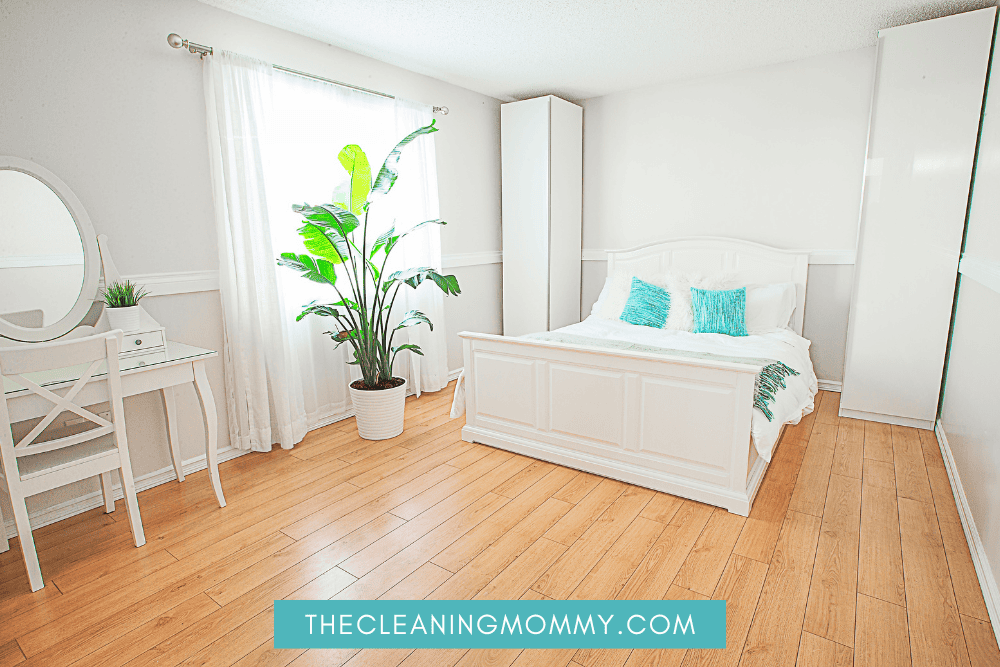
Act Quickly for Spills
When it comes to preserving the beauty of hardwood floors, time is of the essence. Acting quickly when spills occur can prevent deep staining and make removal easier. Remember to identify the type of stain and the type of flooring, as it may affect the entire floor.
For removing stains such as urine stains, it is recommended to use regular detergents and cold water.
However, if spills and accidents are left unaddressed, even for e few hours, they can result in permanent staining if proper stain removal methods are not applied.
If the stains are easily removable, repeat the cleaning process using the chosen stain removal method to remove stains.
Clean According To Stain Type
Before diving into the world of stain removal, it is crucial to identify the type of stain you are dealing with.
Knowing the stain type allows you to choose the most effective removal method and avoid causing further damage to your hardwood floors.
Soaking a clean paper towel or microfiber cloth in cold water is a good starting point for cleaning stained areas.
For urine and ink spills, detergents and cold water are recommended.
White vinegar diluted with water can be used to remove dark marks and stains from hardwood floors.
However, abrasive scrubbers such as scouring pads or steel wool should be avoided as they can damage the floor.
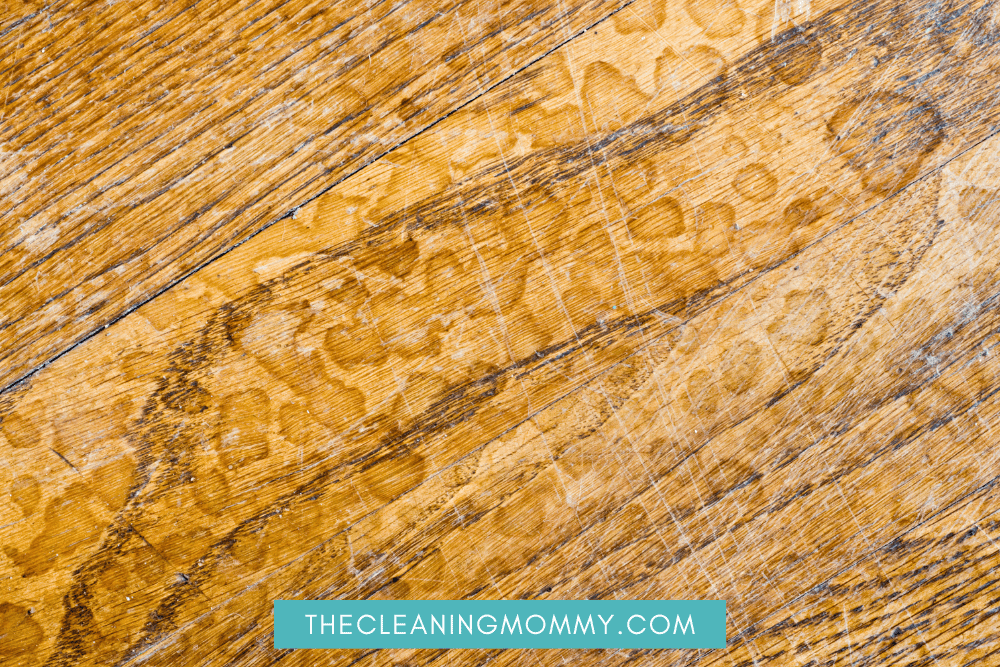
Water Stains and Rings
Water stains and rings can be an eyesore on your beautiful hardwood floors. The key to removing them lies in understanding the type of finish on your floor, such as waxed or urethane-finished. To tackle these stubborn stains, you’ll need to follow different techniques based on your floor’s finish.
In the following subsections, we’ll dive deeper into the specific methods for removing water stains and rings from waxed floors and urethane-finished floors.
Keep reading to find the perfect solution for your hardwood floors.
Waxed Floors
For waxed floors, removing water stains can be quite straightforward since the water may not reach to the actual floor. Simply try #000 steel wool and wax to gently rub away the water stains. This method effectively removes the stains without causing damage to the wax finish.
Remember, preserving the longevity of your waxed hardwood floors requires regular dusting with a soft rag and cleaning with a damp mop.
Refrain from using harsh chemicals or abrasive cleaners, as they can potentially deteriorate the wax finish.
Urethane-Finished Floors
Urethane-finished floors are treated with a urethane coating for enhanced durability and aesthetic appeal. To remove water stains from such floors, follow these steps:
- Use a cleaner specifically designed for urethane finishes.
- Before applying the cleaner, test it in a small, inconspicuous area to ensure it doesn’t cause any damage to your hardwood floors.
- Once you’re confident in the cleaner’s safety, proceed to remove the water stains using a scrub pad designed for urethane-finished floors.
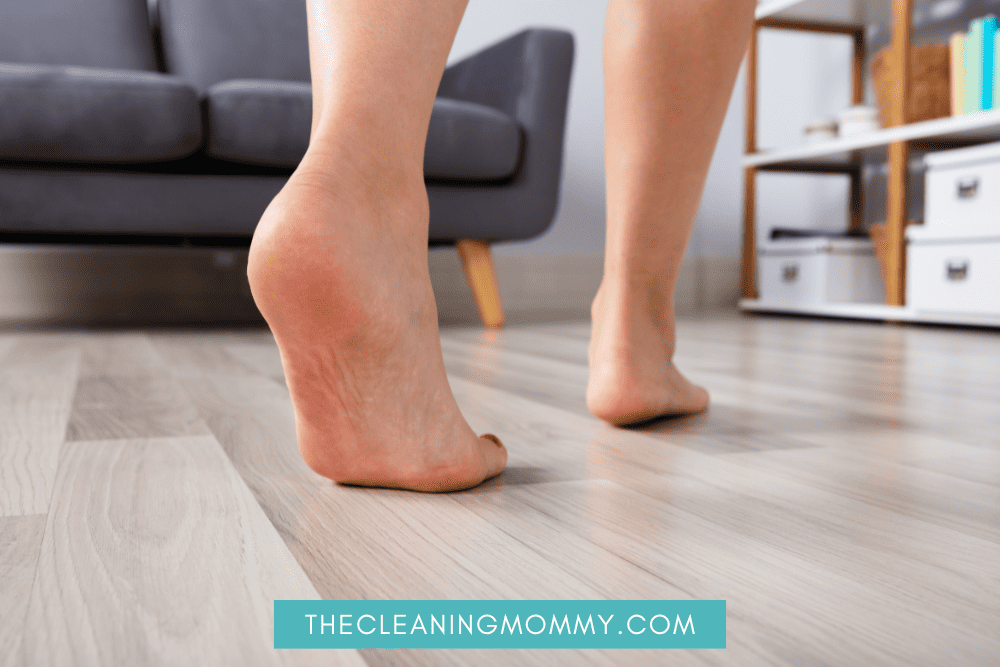
Tackling Grease and Oil Stains
Grease and oil spill stains can be particularly stubborn and are unique to fighting stains from non greasy items. But with the right approach, they can be effectively removed.
Using warm water and dish detergent or a natural degreaser will help you tackle these unsightly stains. After applying the cleaning solution, use clean paper towels to gently blot the stain until it’s gone.
To remove greasy stains from waxed hardwood floors, opt for a kitchen soap with a high lye content.
Keep in mind that if you do not remove black stains caused by greasy items promptly, this can result in a permanent mark on the floor. So, as soon as you notice it, act quickly!
Handling Ink and Dye Stains
Ink and dye stains can be a nightmare for hardwood floor owners.
Fortunately, hydrogen peroxide or a baking soda and vinegar mixture can come to the rescue. Hydrogen peroxide is particularly effective for ink spills on hardwood floors.
Although the vinegar and baking soda method is an abrasive stain remover, it may not always be successful on wood floors. Baking soda lessens the acidic properties of vinegar which may be useful on a stain. Experimenting with different methods and being persistent will eventually help you remove these pesky stains. Apply hydrogen peroxide first to try and raise the stain.
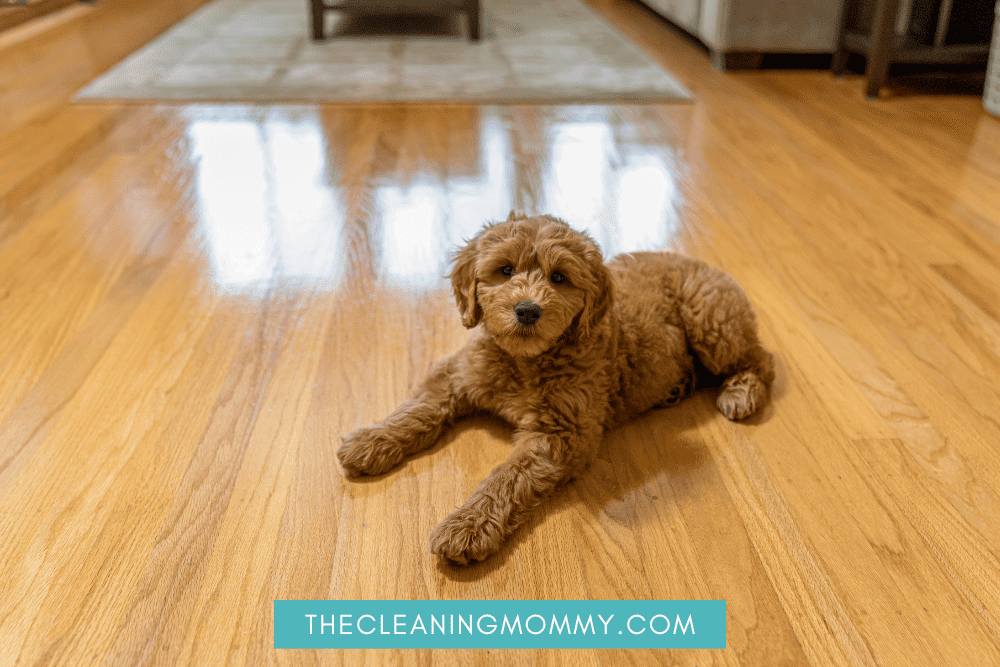
Eradicating Pet Stains
Pet owners know all too well the challenges of dealing with pet stains on hardwood floors.
To eliminate these stains, opt for baking soda or specialized pet stain removers.
Apply a generous quantity of baking soda over the stains and leave it for a period of time. Inspect the area to see if the baking soda has successfully removed some of the stains from the floor.
Repeat the process until most of the stains have been eliminated.
Unfortunately, certain pet stain removers like Nature’s Miracle may not be effective in removing stains.
Restoring Dark Stains
Dark stains on hardwood floors can be very difficult to get rid of. Accomplishing this task might take a lot of effort and patience.
However, hydrogen peroxide, bleach, or sanding and refinishing the affected area can help restore your floors. Hydrogen peroxide works especially well when applied to the surface with cotton balls.
Keep in mind that hydrogen peroxide may require several applications to remove the stain. If sanding and refinishing do not remove the stain, consider repeating the hydrogen peroxide cleaning process or seeking professional advice.
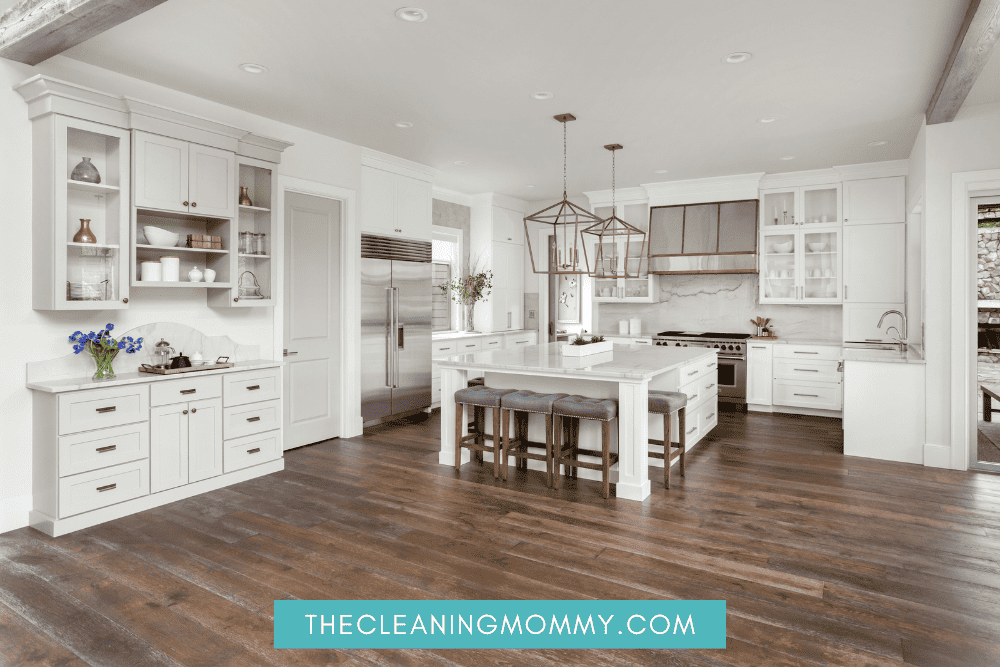
Maintenance and Prevention Tips
Regular maintenance is the key to avoiding stains on hardwood floors and keeping them looking their best. Clean your wood floor daily using safe cleaning products to prevent the buildup of dirt and grime that can lead to staining on your hardwood flooring.
Promptly cleaning up spills on hardwood floors is crucial to prevent the liquid from being absorbed into the wood grain. Even waiting several hours can have a detrimental effect. By prioritizing routine cleaning and taking protective measures, you can preserve the beauty of your hardwood floors for years to come.
When to Consult a Professional
Sometimes, home remedies may not be enough to remove stubborn stains or deal with extensive staining or damage. In such cases, it’s wise to consult a professional for stain removal.
Seeking professional help can be necessary if:
- You’re uncertain about the most suitable sealer for your stain
- You lack experience with staining or refinishing hardwood floors
- The stain on your hardwood floor does not fade after two days of drying
A professional can help you navigate the complexities of stain removal and ensure the best possible outcome for your hardwood floors.
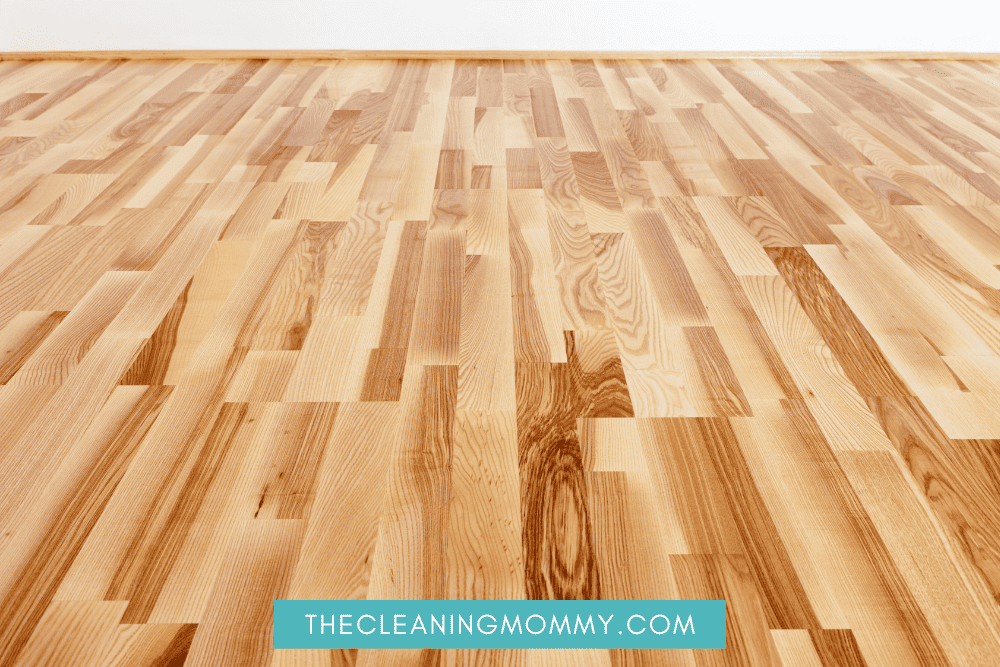
Remove Stains From Your Hardwood Flooring Summary
In conclusion, maintaining the beauty of your hardwood floors requires knowledge of various stain removal methods and persistence in applying them. From quick actions for spills and identifying stain types to tackling specific stains like grease, ink, and pet stains, this guide has provided you with the tools to conquer even the most stubborn stains.
Remember that regular maintenance, proper cleaning techniques, and protective measures are crucial in preventing stains and preserving the appearance of your hardwood floors.
Always remember to act quickly anytime you notice a new stain.
Don’t hesitate to consult a professional when necessary to ensure the best possible outcome for your floors.
By following these stain removal methods and maintenance tips, you’re well on your way to keeping your hardwood floors looking their best for years to come.
Frequently Asked Questions
Does hydrogen peroxide remove stains on hardwood floors?
Hydrogen peroxide is an effective way to remove tough stains from hardwood floors and restore hardwood floors, as it removes stain-causing compounds while drying the wood.
It is a safe and natural alternative to harsh chemical cleaners, and it is easy to use.
Simply mix a solution of hydrogen peroxide and clean water, and apply it to the stained area. Allow the solution to sit for a few minutes.
How do you clean hardwood floors without damaging the finish?
To clean hardwood floors without damaging the finish, dust or sweep well before making a cleaning solution of warm water and a few drops of castile or dish soap. Use a microfiber mop to damp mop small sections at a time, drying them with a clean cloth afterwards.
Maintain this routine by sweeping, dusting or dry-mopping daily and vacuuming weekly. Blot up spills immediately with a dry, clean cloth.
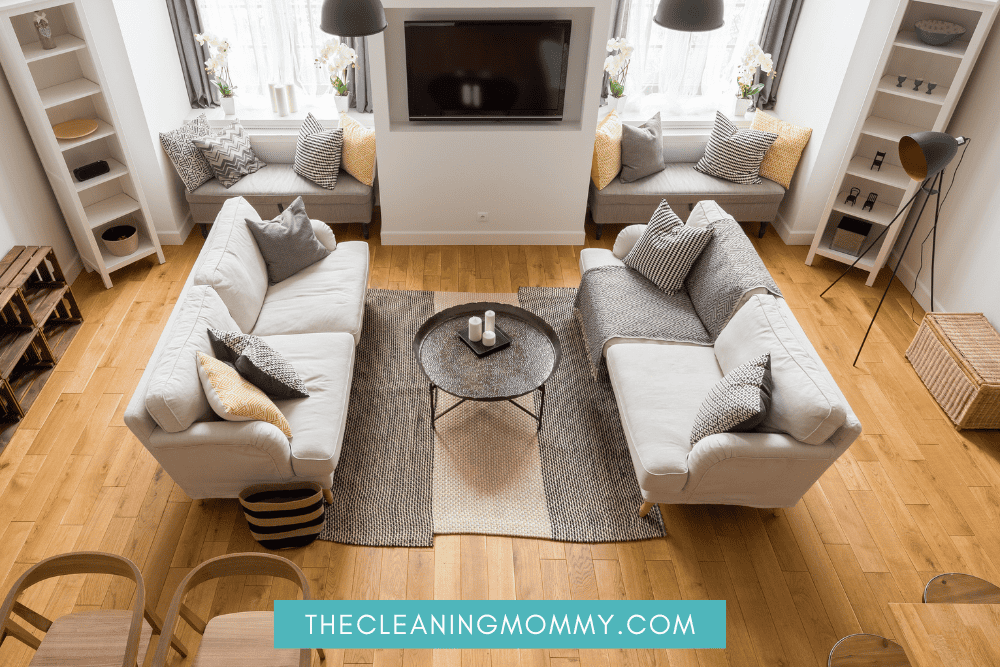
How to clean hardwood floors?
For effective cleaning of hardwood floors, start by dusting or sweeping them. Then use a damp microfiber mop, making sure to clean following the grain of the wood and to avoid excessive water.
If necessary, mix one part vinegar with 10 parts warm water and add a few drops of liquid castile soap for a deeper clean once a month. Lastly, dry the floor immediately with a clean cloth or dry mop.
How can I prevent stains on my hardwood floors?
To prevent stains on your hardwood floors, prioritize routine cleaning, wipe spills immediately, and use protective measures.
Routine cleaning is the best way to keep your floors looking their best. Don’t allow stains to soak, wiping them up as soon as they happen will help prevent staining.
When should I consult a professional for stain removal?
When home remedies fail or for extensive staining and damage, it’s best to consult a professional for stain removal.
Other Cleaning Articles You May Like:
- How to mop floors
- Cleaning hacks to clean lineleum floors with ground in dirt
- How to polish wood floors like a pro!
- Best baby safe floor cleaners
- Best vacuum for luxury vinyl flooring
- How to clean the bathroom floor
- How to clean unsealed concrete floors
- How to clean discolored vinyl flooring
- 3 Methods for making your own homemade eyeglass cleaner
- How to get rid of the nasty mothball smell out of your clothes

Grainne Foley
Grainne Foley is a wife and mother of 2 great kids. During her 5 years of full time RV travel, Grainne learned to become very efficient at household chores, in order to make time for family adventures. Now, back in a house, she has continued to create tools and techniques to help others lighten the load of household organization and cleaning.
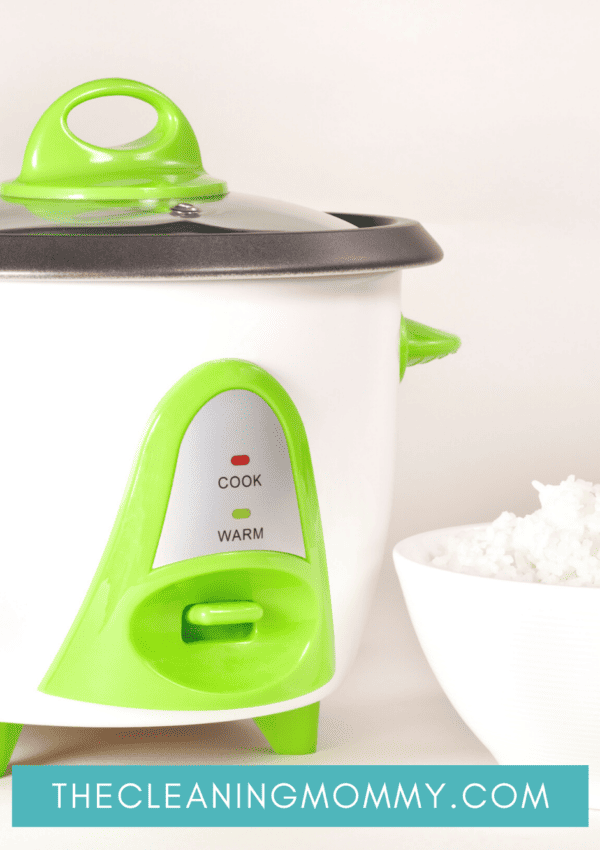
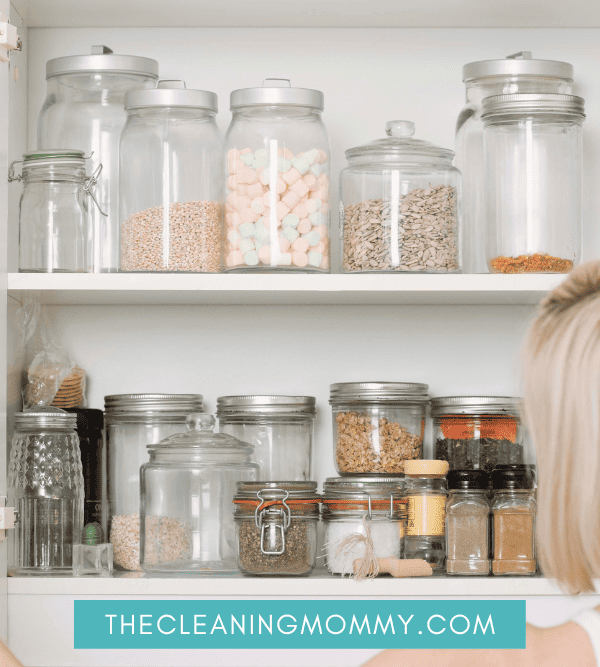
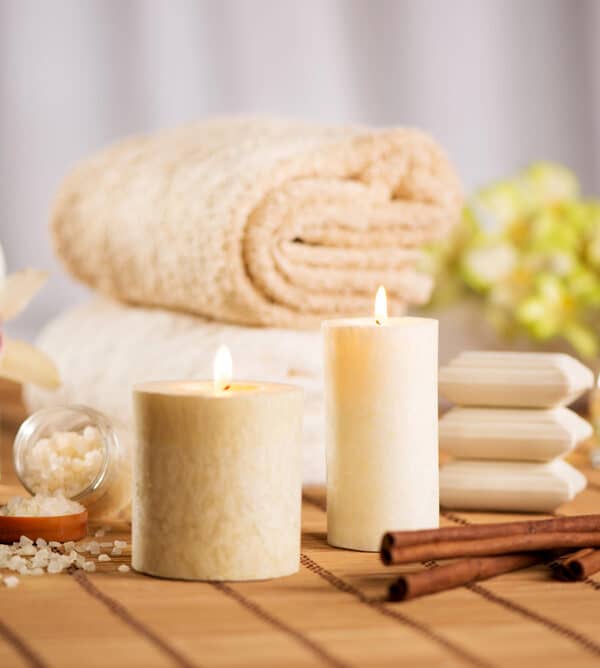
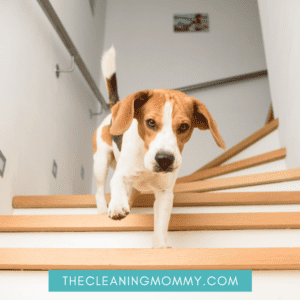
Leave a Reply